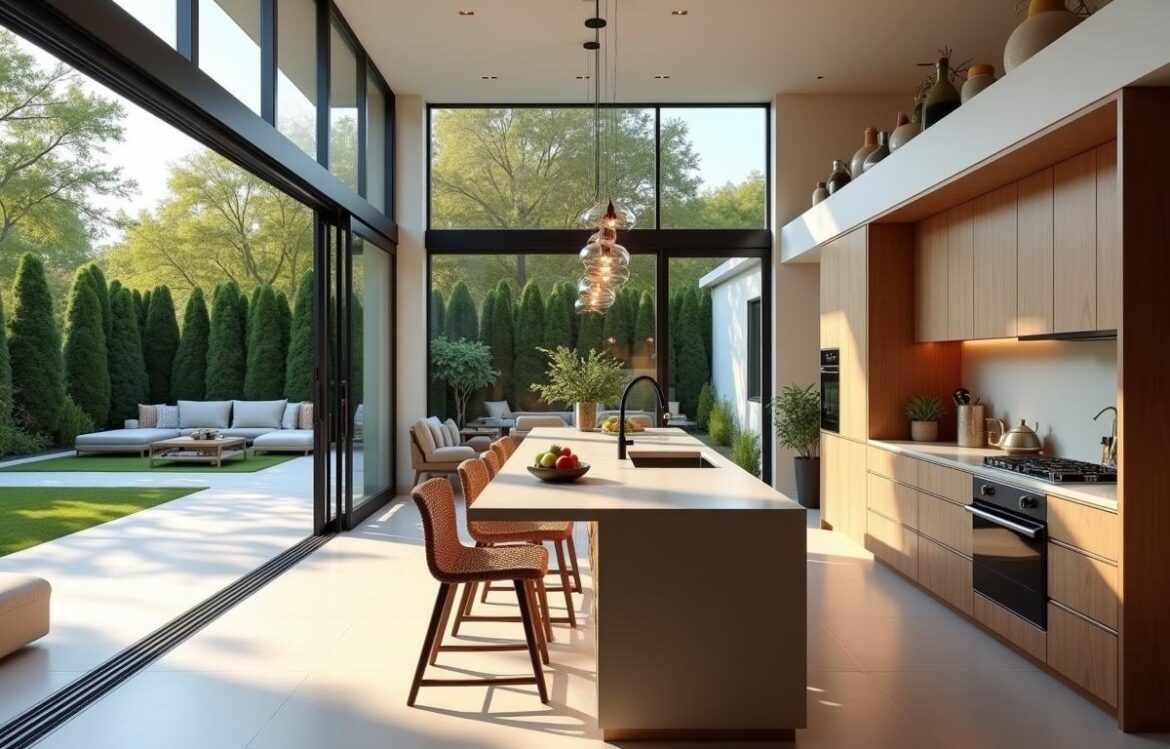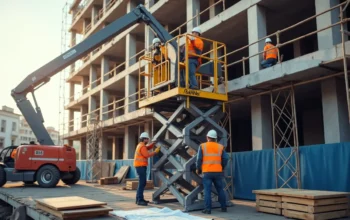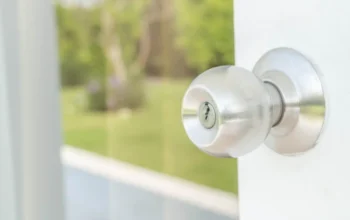What to Include in Your New Home Wish List
When envisioning a place for your lifestyle, consider what to include in your new home wish list. It’s exciting to imagine rooms with just the right amount of space, a yard ready for summer get-togethers, and a layout that truly feels comfortable day after day. This early stage of planning can save time in your house hunting process, since you’ll know what matters to you before you begin. It can also help you stay focused on those must-have home features, preventing you from getting swept away by appealing finishes that don’t actually align with your goals. By being intentional and thoughtful, you create a roadmap that brings you that much closer to the home you’ve always wanted.
Determining Your Non-Negotiables
Before anything else, think about the features you simply can’t live without. That might include the number of bedrooms, proximity to work, or an open-concept kitchen. These are elements that, if lacking, would instantly make a property feel like the wrong fit. Listing non-negotiables early keeps your property search on track, especially when real estate options can vary so widely.
When creating this list, consider your routine and future plans. Perhaps you’re expecting to work from home more, which means a dedicated office becomes necessary. Or maybe you have pets that need a fenced yard. Try to focus on items that significantly impact your daily life, rather than nice-to-haves that might inflate your budget or complicate the buying process.
Evaluating Location and Local Market
The old saying that location is everything still holds true. Where you choose to live affects commute times, grocery store accessibility, and the general vibe of your neighborhood. Some buyers prioritize a quiet suburban setting, while others love the hustle and bustle of city life. If you’re balancing factors like school districts or local market trends, do a little extra research and talk to people in the area to learn about its pros and cons.
Additionally, keep an eye on property values when zeroing in on specific neighborhoods. While you’re primarily choosing a home for personal comfort, resale value can matter long-term. Checking local listings for price histories can offer insights. You’ll gain a sense of how neighborhoods have evolved over time and whether the area is on an upward trend.
Considering Commute and Amenities
Location also translates to time spent either in your car or on public transport. If a long commute eats into your schedule, a shorter drive might top your wish list. Also, think about nearby amenities like parks, shops, and restaurants, since these can make daily errands and weekend relaxation more convenient. The best location blends well with your personal needs and helps keep life running smoothly.
Must-Have Home Features That Reflect Your Lifestyle
Everyone has that idea of a perfect layout or iconic design that makes them swoon. Maybe it’s high ceilings for an airy feel or a chef-inspired kitchen complete with a center island. Whatever it is, prioritize features that will add real value to your daily living rather than just short-lived excitement. If you love hosting gatherings, a spacious living area could be essential. If you hate climbing stairs, a single-level floor plan might be more your style.
Think about how you use or plan to use each space. For instance, if you’re a film buff, that spare room could become a cozy home theater. Or if you regularly have guests, possibly a finished basement or private suite might be in order. Try to keep your choices budget-friendly where possible. Splurging on one or two items that truly matter can be more satisfying than grabbing too many extras that rack up your final purchase price.
Planning for Storage Solutions
It’s amazing how quickly clutter accumulates once you settle in. Having adequate closet space, a functional pantry, or even a well-organized garage can make a massive difference in daily comfort. A particular property might impress at first glance, but take note of practical concerns like where you’ll store seasonal clothing, sports gear, or that stockpile of guest bedding.
Bigger isn’t always better, though. Sometimes, a smaller home with smart storage solutions can outperform a larger house stuffed with random closets. Look for built-ins, or plan to add shelving to existing cabinet space. Don’t overlook hidden storage potential beneath staircases or even near laundry machines you can find plenty of ways to maximize your square footage.
Creating Systems That Work for You
Whether it’s a dedicated area for shoes by the front door or a cleverly designed mudroom, setting up organizational zones is crucial for daily sanity. If you value a neat environment, picking a home with the right layout can help you maintain cleanliness more easily. Think about how you function in your current space. Make simple notes on what isn’t working so that you can improve it in your new place.
Considering Energy Efficiency and Eco-Friendly Elements
There’s more to a property than its aesthetic charm. Energy efficiency not only reduces monthly bills but also makes your home more comfortable year-round. Double-pane windows, proper insulation, and modern heating or cooling systems can drastically alter your living experience. An eco-friendly property could include solar panels or smart home tech that tracks usage and adjusts temperatures on the fly.
It’s not just about savings, though. Emphasizing eco-friendly features can help a property stand out in the local market if you decide to sell down the line. Even smaller touches like LED lighting, programmable thermostats, or a well-landscaped yard that aids in temperature regulation can shake up your approach to homeownership.
Balancing Budget and Mortgage Advice
Imagining your dream property is fun, yet it’s critical to understand your financial reality. Speaking with a financial consultant or getting early mortgage advice can provide clarity on what you can comfortably afford. That knowledge will help narrow down the prospects you see, which saves time and beats the disappointment of falling in love with a home you simply can’t finance.
Think about ongoing costs as well. Taxes, insurance, and potential homeowners’ association fees can quickly add up. If your wish list includes high-end finishes or new construction, research common property taxes in neighborhoods with similar homes. Having realistic expectations right from the start keeps that dream from turning into a burden.
Seeking Loan Pre-Approval
A pre-approval opens doors when you’re vying for a popular listing. It shows sellers you’re serious and can secure funding. This step also refines your budget further, letting you craft a more accurate wish list. With those numbers in hand, your property search becomes simpler and more realistic.
Pinpointing the Best Layout for You
While location and price matter, the layout can either enhance your way of life or lead to daily frustrations. If you work odd hours or need quiet areas, ensure there’s enough separation between bedrooms and common spaces. Families with young kids might prefer a floor plan where bedrooms are close together, while older children might enjoy a bit of privacy. Let your routine guide you.
Some modern layouts favor open-concept living. In these cases, the kitchen, dining area, and den flow seamlessly, which can be perfect for those who love entertaining. However, if you prefer defined rooms, an open-concept design might feel less cozy. Take the time to imagine daily life in each layout you encounter.
Paying Attention to Outdoor Spaces
Whether you love hosting an afternoon barbecue or simply crave fresh air, an outdoor area can become a personal oasis. Consider the size and shape of the yard, as well as its maintenance needs. Some families prize sprawling lawns for sports, gardening projects, or letting pets run free. Others focus on patios and decks with seating for midday coffees or weekend dinners.
Even if you’re not an avid gardener, noticing existing landscaping could be beneficial. Trees provide shade and can help with utility costs. A backyard can also be transformed into a play space or an area for a small vegetable patch. Keep landscaping costs in mind as well, since large yards can require extra care if you’re not used to maintaining them.
Adding Personal Touches
Outdoor spaces invite creativity. Think about lighting that adds ambiance after sunset or an inviting seating arrangement for friends who drop by. If privacy matters, fences and hedges can offer a sense of seclusion. You might plan to plant a few flowers or incorporate water features for a tranquil setting. Keep your imagination open small tweaks can go a long way toward making an outside area uniquely yours.
Checking Resale Value Even as You Plan to Stay
It’s easy to forget about future resale value when you’re enthralled by your dream space. While you might intend to stay long-term, life situations can change. Upgrading kitchens, focusing on energy efficiency, or picking a neighborhood near popular schools all boost a home’s desirability. These elements become significant selling points if you decide to move.
Most buyers look for well-maintained properties in stable or up-and-coming areas. An updated kitchen and modern bathrooms often provide excellent returns. Even smaller enhancements like fresh paint and contemporary lighting can be effective. Balance your personal preferences with marketable features, and you’ll stand on solid ground whether you stay put or embark on a future move.
Taking Your Time to Refine
Remember, this list isn’t set in stone. Initially, it’s normal to have a long wish list that might exceed your budget. Narrow it down by focusing on practicality and what truly suits your lifestyle. As you visit properties, you’ll learn which aspects you can be flexible on and which items feel utterly essential. Having too few must-haves can lead to settling, whereas being too rigid can rule out otherwise wonderful homes.
House hunting can be emotional, and it’s easy to get swept up in the thrill of new construction or eye-catching renovations. Take a moment, step back, and refer to your wish list each time. If a gorgeous remodel lacks fundamental features you need, think carefully before offering. Striking that balance between heart and mind keeps you on track to find a place you’ll cherish for years.
In the end, the process of organizing your new home preferences is a proactive way to make your property hunt smoother. By reflecting on your lifestyle, finances, and future, you craft a guide that highlights the must-have elements and sets realistic goals. That way, every step you take whether consulting mortgage advice or touring an open house brings you closer to settling into a home that truly feels like yours.




